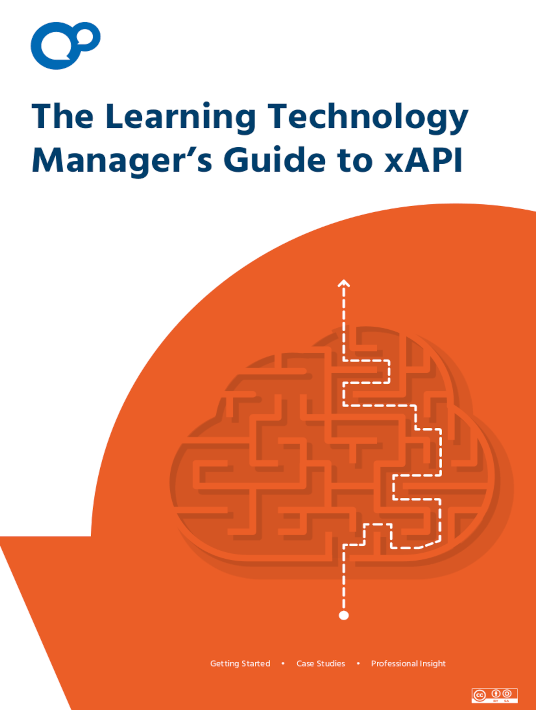Professional Insight From xAPI Experts
Before we can present what the xAPI can do for the Learning Technology Manager, we need to talk about what an API is. API is the acronym for Application Programming Interface. Basically, it is software that allows two applications to communicate with each other. Each time we use a social media app, email someone, or receive traffic notifications, we are basically using an API.
Experience API or xAPI is a document that describes certain specifications. It came to be under the Advanced Distributed Learning Initiative (ADL), which is a US government program. Its original name was "Project Tin Can," but nowadays it is known by its official name, xAPI.

An important part of xAPI is what we call an "xAPI statement." This term describes a way of communication between the Provider, the LRS, and the Consumer. An xAPI statement needs three elements: the Actor, the Verb, and the Object. xAPI statements are parsed using JSON, which looks similar to XML in a way.
This guide is going to help you understand and unlock the secrets of xAPI. By making the best use of this, you are bound to have your learning schemes reach the desired results in no time.
About The eBook: The Learning Technology Manager's Guide To xAPI
The eBook is made up of 5 chapters. They are the following:
Introduction
The eBook opens with an introduction from Ben Betts, chief product officer at Learning Pool. Ben has written an excellent piece about the role of data in learning technologies. He explains the top issues learning technology managers face today, what xAPI is, and how the future of L&D depends on finally getting control of learning data.
Introducing The Experience API
This chapter focuses a bit more on xAPI itself. The reader will learn how xAPI came to be and why it is better than other API when dealing with learning experiences. There is a comparison to SCORM, or rather an analysis of their relationship. This chapter also has a small presentation of the xAPI format and how JSON is reading it. There is also an in-depth look at xAPI's various uses, the needs it fulfills, and the other alternatives that are currently available.
Introducing The Learning Record Store
The following chapter is a presentation of the Learning Record Store and how it interacts with Experience API. Basically, the Learning Record Store takes the data produced by the API and archives it. That way, Instructional Designers and learning professionals can use that data to improve the ways they interact with their learners.
Developing xAPI Statements
The next chapter is about the process of developing xAPI statements. This is where things get a bit more technical. The xAPI statement is taken apart and its parts are analyzed and explained. There are also some very to-the-point examples of xAPI statements. Additionally, there is a list of tips that can make the interactions with the Learning Record Store a lot smoother.
Case Studies
The last chapter of the eBook presents three case studies of early adopters who are using xAPI today. You’ll read about a range of corporate and education uses, including relating training activity to sales performance, increasing learner success, and creating a gamification system.
Conclusion
The Learning Technology Manager's Guide To xAPI is the quintessential Experience API resource. It contains everything a learning technology manager needs to understand and use xAPI in order to make the most out of their organization's learning data. The team of professionals behind this eBook has truly gone above and beyond to deliver the best possible point of reference for Experience API.







